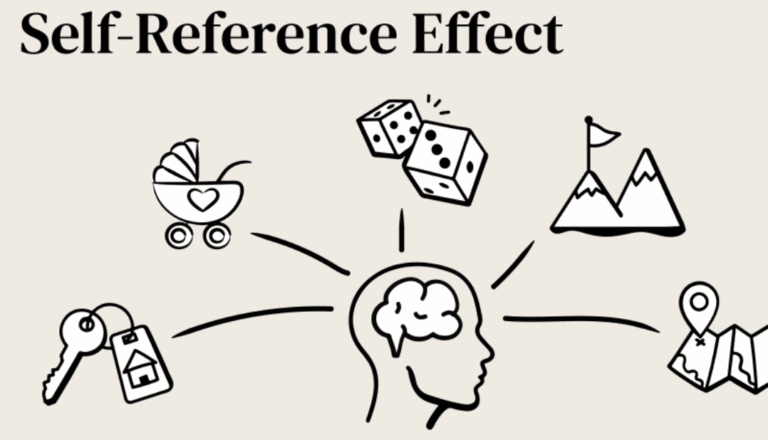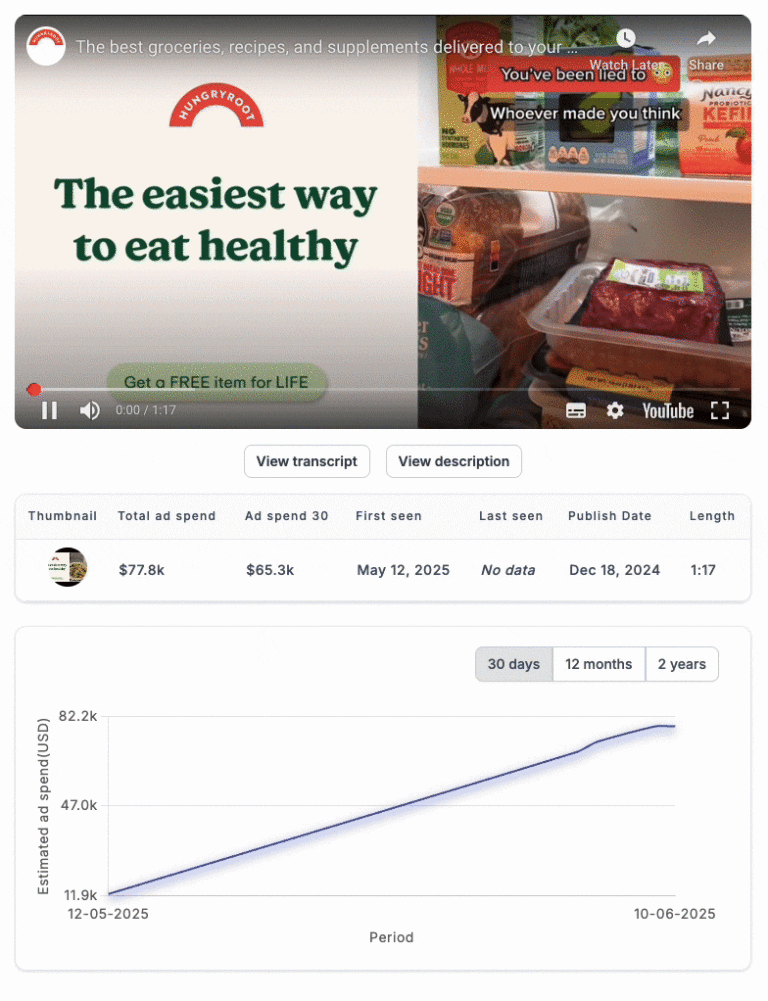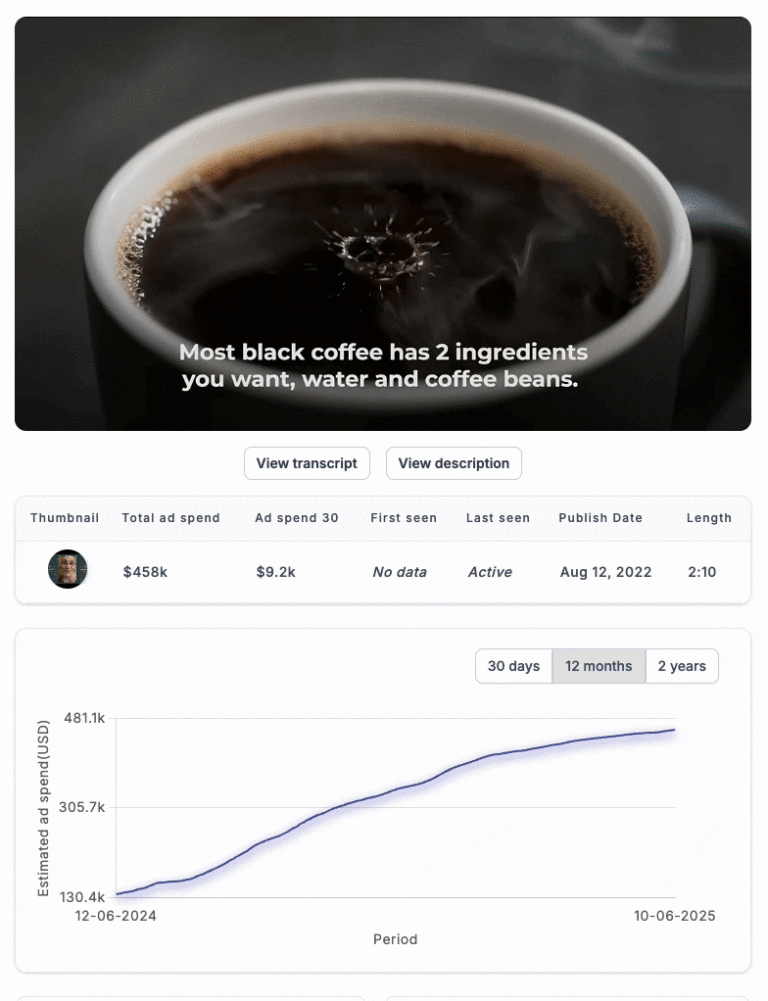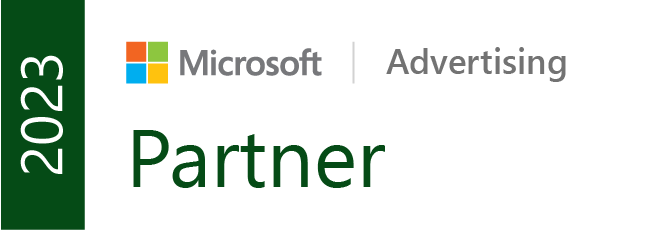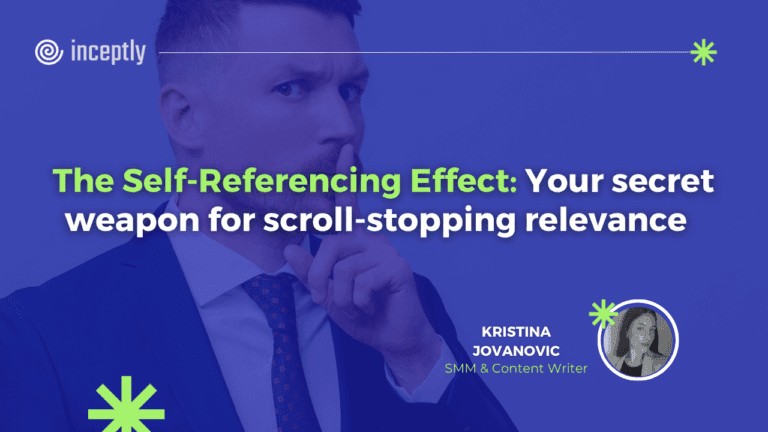
The best-performing YouTube ads don’t always start with a big promise.
Sometimes they start with something even more powerful:
“That’s me.”
When a viewer sees themselves — their habits, preferences, struggles — reflected back to them, you don’t need to shout – they’re already listening!
But this isn’t guesswork.
It’s a well-studied psychological effect called the Self-Referencing Effect — and when you apply it correctly in your direct response ads, you’ll drive longer watch times, better clicks, and more qualified conversions.
Got your attention?
Want to brainstorm with our team on new ways to scale your business with YouTube Ads (and other performance video platforms)?
Join us for a free YouTube ad brainstorming session👇
Great, let’s dive right into it, shall we?
🧠 What is the Self-Referencing Effect?
The Self-Referencing Effect is a cognitive bias where we remember and engage more deeply with information that relates to us personally.
It’s why people remember ads with characters who talk like them.
It’s why testimonials from similar demographics outperform generic ones.
And it’s why, when someone describes your exact daily routine, pain point, or value, it stops the scroll.
In direct response advertising, this isn’t just about personalization — it’s about mirroring.
You hold up a relatable reflection… and guide them to action!
Now, let’s analyze how some of the existing YouTube ads are taking advantage of this effect.
🎯 YouTube ad example #1: Hungryroot
Ad style: POV vlog, “Here’s what I ate today”
Opening line: “Whoever made you think it was hard to eat healthy has never heard of Hungryroot…”
This ad doesn’t sell benefits.
It shows a day-in-the-life that mirrors the viewer’s ideal: fast, healthy, delicious meals.
No heavy problem setup, no aggressive pitch — just relatable self-narration.
From there:
✅ She shows specific food pairings
✅ Drops calorie and protein info (perfect for health-conscious viewers)
✅ Mentions preferences: no red meat, quick cooking
✅ Describes her exact quiz onboarding experience
Very casual, right? But highly calculated!
Every line mirrors the internal thoughts of a busy, health-conscious woman trying to eat well without stress. It doesn’t feel like marketing — it feels like someone living your life, but one step ahead.
Why it works:
It’s quite simple – it makes the viewer think: “Hey, this sounds like me — maybe this is for me.”
☕ YouTube ad example #2: Lifeboost coffee
Ad style: Problem-first with rapid validation
Opening line: “Most black coffee has two ingredients you want — and over 400 you don’t.”
This ad hooks a health-aware coffee drinker by immediately triggering worry:
Mold
Heavy metals
Glyphosate
Reflux
Heartburn
Then it transitions into a company story — how Lifeboost was born from the need for cleaner, low-acid coffee. Customer testimonials reinforce the pitch, but here’s the key:
👉 The testimonials don’t feel staged.
They sound like real people talking like the viewer talks, describing the exact same problems the viewer may never have verbalized — but instantly recognizes.
“I was skipping my morning coffee because of reflux…”
“I was getting heartburn, even though I love coffee…”
That’s the Self-Referencing Effect: show people themselves, then show them the fix.
🧰 How to apply the Self-Referencing Effect in your DR ads
This isn’t about personalization tech.
It’s about language, identity, and psychology.
Here’s your direct response checklist:
1. Use “You” and “Your” — But make it specific
❌ Bad: “Our solution helps you feel better.”
✅ Better: “If you’re skipping your morning coffee because of reflux…”
👉 The key is to embed identity or habit. Make it feel like a journal entry.
2. Show routine, not just results
Hungryroot nailed this by showing breakfast → juice → lunch → dinner.
Each moment was relatable — not aspirational.
“Here’s what a day in your life could feel like if you used our product.”
3. Mirror frustrations with specificity
📦 Generic: “Do you struggle with meal planning?”
🎯 Effective: “You ever scroll recipes for 20 minutes, then just heat up frozen nuggets again?”
Use language your audience already uses in their head.
This builds subconscious “she gets me” trust — the foundation of a click.
4. Choose Your Spokesperson Strategically
Don’t just cast models. Cast avatars.
Is your target demo millennial moms? Cast one.
Is your angle built around digestive issues? Use real testimonial footage from someone over 50 talking plainly.
👉 Let your viewer see themselves in the first 3 seconds.
Conclusion is – Make the viewer say, “Hey, that’s me!”
The Self-Referencing Effect isn’t about creepy personalization or AI wizardry.
It’s about writing ads that reflect the viewer’s world back to them.
When done right:
✅ They feel seen
✅ They keep watching
✅ They believe your product fits their life — not someone else’s
That’s when direct response starts to feel effortless.
Because once a viewer sees themselves in your ad, you’re no longer selling – you’re just confirming what they already know: this was made for me.
Until next time, fellow marketers!
Want to brainstorm with our team on new ways to scale your business with YouTube Ads (and other performance video platforms)?
Join us for a free YouTube ad brainstorming session👇

Bojan Bovan, Account Manager
With his extensive background in media buying for some of Inceptly's biggest clients, Bojan is known for his inquisitive mind and attention to detail. He keeps his hand on the pulse of new developments in direct-response advertising and enjoys finding ways to apply innovative strategies and techniques to keep our clients ahead of the curve.
Want more content like this?
Don’t miss out on the latest news and updates from the world of Direct Response advertising! Subscribe to our newsletter today 👇
Like this post? Let's continue the conversation!
Get in touch with us by shooting us a quick email or tagging us on LinkedIn or Instagram, and sharing your thoughts. Your feedback helps us keep our blog relevant and interesting.
Get Our Newsletter
Need Help?
Get in touch with us for an insightful evaluation of your ads + actionable tips to help amp up your direct response revenue

